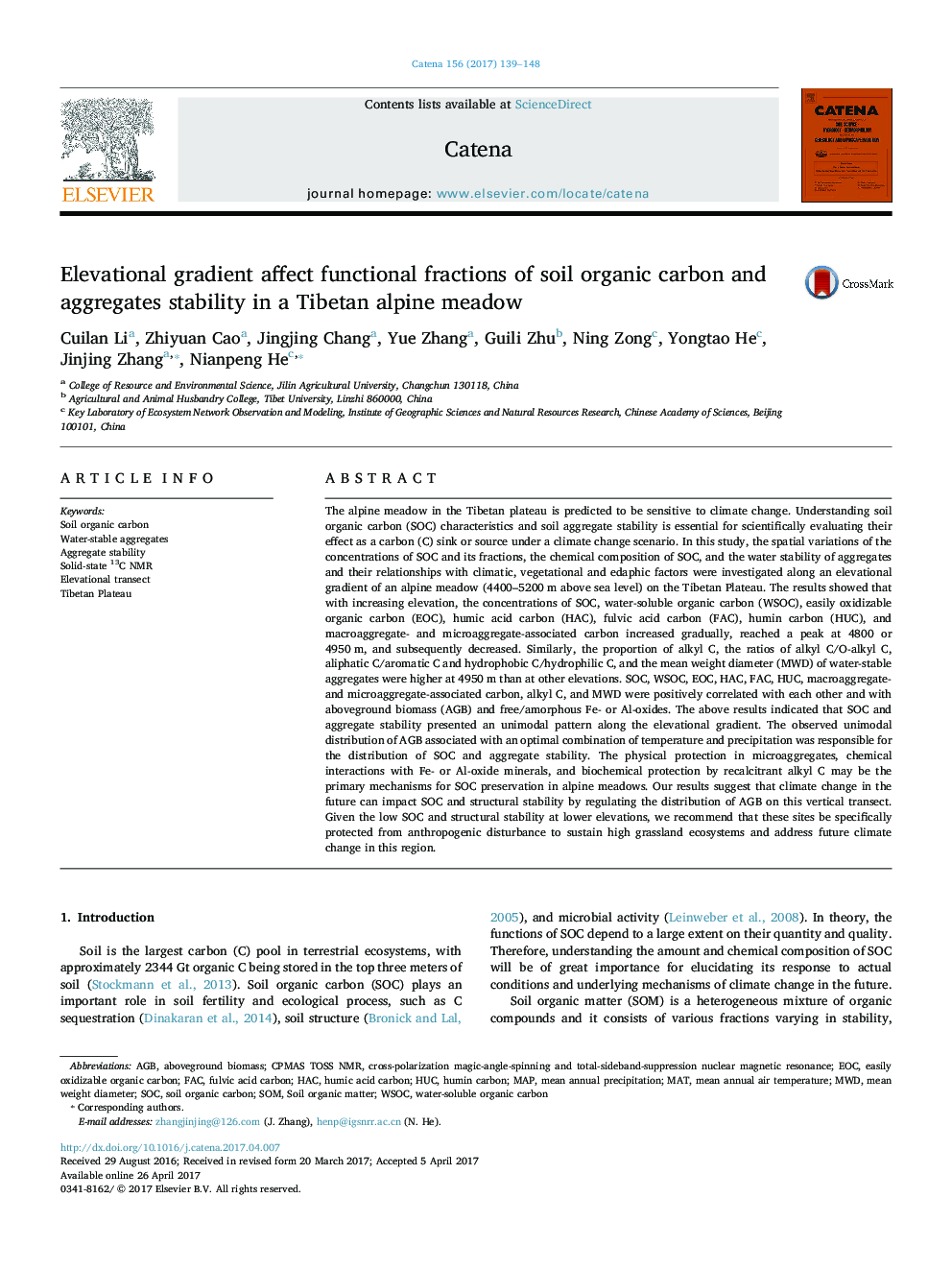| کد مقاله | کد نشریه | سال انتشار | مقاله انگلیسی | نسخه تمام متن |
|---|---|---|---|---|
| 5769990 | 1629198 | 2017 | 10 صفحه PDF | دانلود رایگان |
- SOC increased with increasing altitude up to 4800 or 4950Â m, and then decreased.
- SOC at 4950Â m had higher degrees of decomposition, aliphaticity, and hydrophobicity.
- Soil aggregate stability also presented unimodal pattern along elevation gradient.
- AGB is a key factor in determining spatial variations of SOC and aggregate stability.
- Fe/Al oxides also regulate spatial variations of SOC and aggregate stability.
The alpine meadow in the Tibetan plateau is predicted to be sensitive to climate change. Understanding soil organic carbon (SOC) characteristics and soil aggregate stability is essential for scientifically evaluating their effect as a carbon (C) sink or source under a climate change scenario. In this study, the spatial variations of the concentrations of SOC and its fractions, the chemical composition of SOC, and the water stability of aggregates and their relationships with climatic, vegetational and edaphic factors were investigated along an elevational gradient of an alpine meadow (4400-5200Â m above sea level) on the Tibetan Plateau. The results showed that with increasing elevation, the concentrations of SOC, water-soluble organic carbon (WSOC), easily oxidizable organic carbon (EOC), humic acid carbon (HAC), fulvic acid carbon (FAC), humin carbon (HUC), and macroaggregate- and microaggregate-associated carbon increased gradually, reached a peak at 4800 or 4950Â m, and subsequently decreased. Similarly, the proportion of alkyl C, the ratios of alkyl C/O-alkyl C, aliphatic C/aromatic C and hydrophobic C/hydrophilic C, and the mean weight diameter (MWD) of water-stable aggregates were higher at 4950Â m than at other elevations. SOC, WSOC, EOC, HAC, FAC, HUC, macroaggregate- and microaggregate-associated carbon, alkyl C, and MWD were positively correlated with each other and with aboveground biomass (AGB) and free/amorphous Fe- or Al-oxides. The above results indicated that SOC and aggregate stability presented an unimodal pattern along the elevational gradient. The observed unimodal distribution of AGB associated with an optimal combination of temperature and precipitation was responsible for the distribution of SOC and aggregate stability. The physical protection in microaggregates, chemical interactions with Fe- or Al-oxide minerals, and biochemical protection by recalcitrant alkyl C may be the primary mechanisms for SOC preservation in alpine meadows. Our results suggest that climate change in the future can impact SOC and structural stability by regulating the distribution of AGB on this vertical transect. Given the low SOC and structural stability at lower elevations, we recommend that these sites be specifically protected from anthropogenic disturbance to sustain high grassland ecosystems and address future climate change in this region.
Journal: CATENA - Volume 156, September 2017, Pages 139-148
